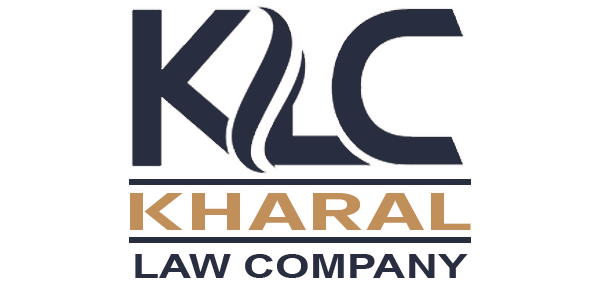Content
The new rule in effect meant that all non-lit trading below a certain value threshold needed to occur either at National Best Bid and Offer (NBBO) mid, or at least one whole tick price improvement to the NBBO. There are https://www.xcritical.com/ some nuances and caveats, however in practice almost all dark pool trading has moved to NBBO mid. In fact, fifteen crossing systems have ceased operation in Australia in the last decade. In simple terms, Dark Pools are private exchanges (or forums) for securities trading which (unlike public stock exchanges) are not accessible to everyone. They are called “dark pools” because they operate in a hidden fashion compared to transparent (‘lit’) markets where every order and trade is public.
Information and optimal trading strategies with dark pools☆
The same risk exists when buying large blocks of a given security on a public market, as the purchase itself can attract attention and drive up the price. Each ATS is required to report to dark pool stock trading FINRA its weekly aggregate volume information on a security-by-security basis. FINRA will publish the information regarding Tier 1 NMS stocks (i.e., stocks in the S&P 500 Index, the Russell 1000 Index and certain ETPs) on a two-week delayed basis.
Anonymity in securities markets
Unlike an actual performance record, simulated results do not represent actual trading. Also, because the trades have not actually been executed, the results may have under-or-over compensated for the impact, if any, of certain market factors, such as lack of liquidity. Simulated trading programs, in general, are also subject to the fact that they are designed with the benefit of hindsight. No representation is being made that any account will or is likely to achieve profit or losses similar to those shown.Five Percent Online LTD – Copyright © 2024.
Advantages and Disadvantages of Dark Pools
If you’d like more detailed info on how exchanges are created, you can read our case study about the project where we’ve built and launched an exchange from scratch. So, again, the primary function of an exchange is to efficiently match buy and sell orders. Any information provided by third parties has been obtained from sources believed to be reliable and accurate; however, IBKR does not warrant its accuracy and assumes no responsibility for any errors or omissions.
- These closed marketplaces have less transparency to mitigate their impacts on market prices, hence the name of dark pools.
- Some trading platforms, where individual investors buy and sell stocks, also use dark pools to execute trades using a payment for order flow.
- To avoid the transparency of public exchanges and ensure liquidity for large block trades, several of the investment banks established private exchanges, which came to be known as dark pools.
- Smaller companies, like Intrinio, have started to offer the data in a much more affordable and accessible way.
- So, again, the primary function of an exchange is to efficiently match buy and sell orders.
The SEC has proposed new rules to increase transparency in Dark Pools, requiring them to report detailed information about their trades.This is for many – a step in the right direction towards a more level playing field in the market. For many years now, the SEC in the US, has well as the MiFID in Europe have been put under pressure to “balance the benefits of such trading venues with broader market integrity and transparency requirements”. Generally, that can be seen as a good thing for the large institutional investors that trade on behalf of their clients—those that invest in their investment funds—and potentially for market efficiency overall. Most retail investors won’t directly interact with dark pools, so understanding exactly what these venues are and why they exist can be difficult. As mentioned earlier, dark pools allow large trades to be made with reduced fear of front running. With dark pools, large trades can be broken into smaller trades and executed before the price of a security becomes devalued.
Dark Pool Indicators are tools used to gain a deeper and more insightful perspective into trading activity outside of the open market. Although not able to trade directly in Dark Pools, some traders have nonetheless learned to use Dark Pool indicators and incorporate them as part of their trading strategy. Here’s an infographic that sheds light on the crypto exchange regulation worldwide. For those wanting to trade markets using computer-power by coders and developers.
The SEC publishes those disclosures, along with a regularly updated list of ATSs, on its website. Share trading performed on platforms available to the public usually come with functionality allowing any user to see how many “now” and “sell” orders are in the pipeline that day for any individual security on the platform (i.e. NASDAQ). These companies usually trade hundreds of thousands of securities with values over millions of dollars, and the rumour of these events is sufficient to dramatically decrease or increase the price of the security in question.
But if other traders identify the institution or the fund that’s selling they could also sell, potentially driving down the price even further. “When we look at our market share, we’ve seen it pick up,” Khandros said in an interview. “As retail trades more heavily and the retail market makers interact with that flow, there is a chance they are sending more of it to the UBS ATS.” For Chi-X, the dark pool (Hidden Liquidity) is fully integrated with the lit market. This means that 100% of aggressive lit orders on Chi-X will sweep through the Chi-X dark pool. The assurance of anonymity helps institutions protect their market strategies and avoid potential predatory trading practices by other market participants.
MEQ effectively sets a matching criteria on your order that is on par with a price limit. At the risk of belabouring the swimming pool analogy, it can act as a lifeguard and stop you from diving head-first into the shallow end. There are many critics of HFT since it gives some investors an advantage that other investors cannot match, especially on private exchanges. Conflicts of interest and other unethical investing practices can be hidden in dark pools as well. Algorithmic trading and high-frequency trading (HFT) are two forms of trading that are executed without any human input. The computer programs will execute huge block trades within fractions of seconds and ahead of other investors.
They provide traders with real-time information about the size, timing, and price of trades. As we found out in the first part of the article, retail traders generally do not have direct access to dark pools unless they are lucky enough to manage huge trading accounts. At Devexperts, we’ve built our proprietary order-matching solution that works both for exchanges and dark pools and is compatible with a broad range of trading instruments.
The possibility of price improvement also exists if the mid-point of the quoted bid and ask price is used for the transaction. With options two and three, the risk of a decline in the period while the investor was waiting to sell the remaining shares was also significant. In 2007, the SEC passed the National Market System rule, allowing companies to bypass the public market and directly trade in private exchanges to gain a price advantage. This rule, besides the rise in HFT technology, increased the number of private exchange traders and saw the creation of more privately held exchanges.
The company initiates the order with a floor broker for several days to make price estimations and trade valuations and find the best bidding and asking prices. Agency-broker dark pools are another common private trading system that acts as agents instead of a principal. These exchange-owned dark pools do not involve price discovery because they use the National Best Bid and Offer model to reach a price midpoint. Dark pools and other types of non-public exchanges work through private brokers, who are subject to SEC regulations. Therefore, the US Securities and Exchange Commission controls these exchanges despite the lack of transparency and unfair opportunities it may create for large institutions. UBS has seen a “material uptick” of block trading on its ATS, said Khandros, who is also global co-head of principal investments and strategic ventures at UBS.
By monitoring DPPs, traders can assess the liquidity and price impact of dark pool activity. Once a match is found, the buy and sell orders are executed within the dark pool. In a dark pool, participants can anonymously submit buy or sell orders without revealing their intentions to the broader market. These orders are hidden from public view and are only visible within the dark pool itself. All kinds of marketplaces, be it an exchange or a dark pool, equip some kind of order matching solution (also called matching engine) to meet the sole objective of efficient exchange of assets between their clients.
We measure information acquisition using stock price dynamics around earnings announcements. To overcome endogeneity concerns, we exploit a large exogenous decrease to dark pool trading that results from the implementation of the Security and Exchange Commission’s (SEC’s) Tick Size Pilot Program. The results cannot be explained by lit venue liquidity, algorithmic trading, or informational efficiency. A battery of additional tests, such as documenting a shift in SEC EDGAR searches, supports the information acquisition interpretation. You can think of the integrated order types as essentially a trip wire for information. Critics argue that they create an uneven playing field, giving institutional investors an unfair advantage over retail investors.
Dark pools were initially utilized mostly by institutional investors who did not want public exposure to the positions they were moving into, in case there were investors front running. Front running refers to an investor who enters a position into a security before a block trade is completed and can reap the benefits of the subsequent price movement. On the open market, large block sales tend to decrease the stock price, by increasing the supply of the security available to trade. Dark pools allow large institutional holders to buy or sell in large volumes, without broadcasting information that could affect the wider market.


